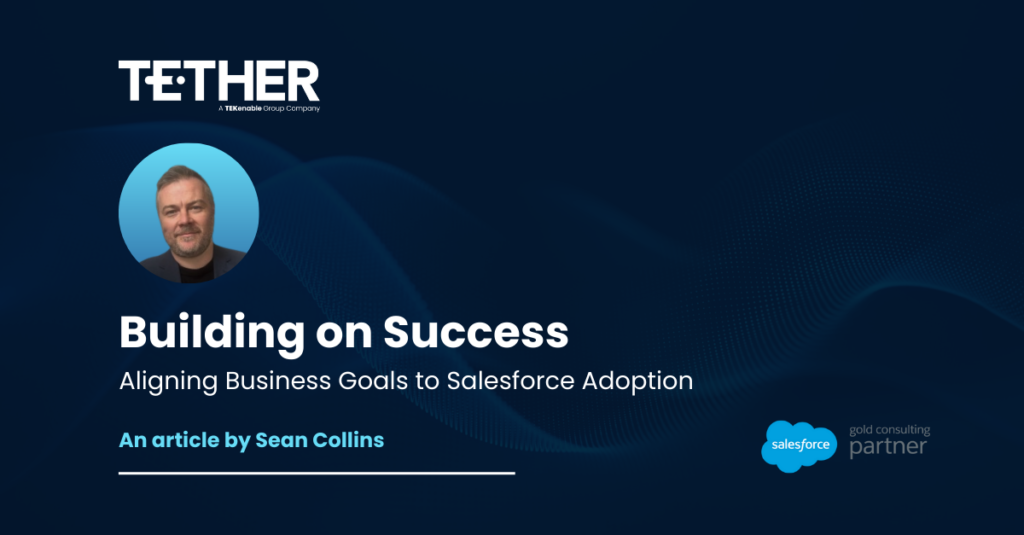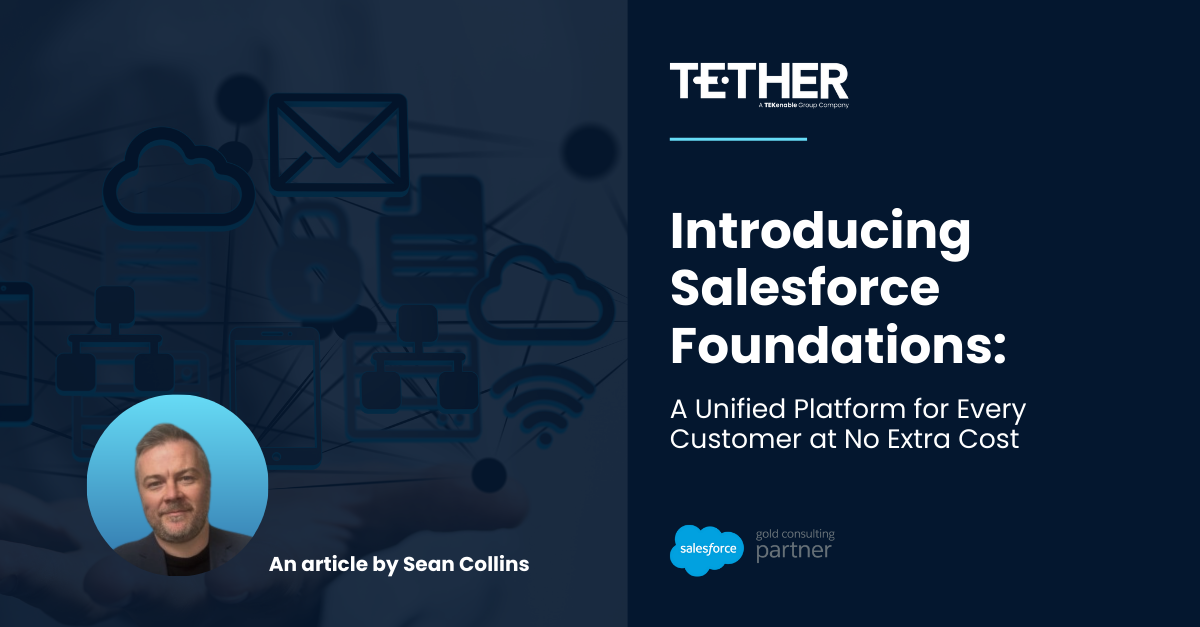In our previous blog post, Developing the Right Goals: Aligning Salesforce with Clear Business Objectives we looked at how developing business goals in tandem with Salesforce implementation is essential for success. Now, let’s delve deeper: how can organisations drive user adoption and maximise the platform’s impact?
In the quest for organisational success, aligning business goals with Salesforce adoption is crucial, and Salesforce, renowned for its versatility, offers a customisable user interface (UI) that can be tailored to meet specific business needs, drive user adoption and enhance productivity.
Here is why that matters:
while Salesforce is a powerful platform that allows users to do things like take advantage of generative AI as well as increase business velocity, implementing a software platform is not the same as becoming a data-driven business.
In order to truly transform, organisations need to use the platform in a way that meets their business goals. In practice, this means getting the right data policies in place and then working to drive Salesforce adoption internally.
Starting with the Culture
Salesforce adoption refers to the extent to which users embrace and effectively use the Salesforce platform in their daily operations. High adoption rates are crucial as they lead to better data quality, improved productivity, and greater return on investment (ROI). When users are engaged and proficient in using Salesforce, the platform becomes a powerful tool for achieving business objectives.
The best way to get there is to make sure a Salesforce implementation is set up to meet the needs of staff within an organisation – which will differ by role and department – and to work for maximum buy-in from users by demonstrating how the platform meets their needs.
This might sound vague or aspirational, but it isn’t. The foundation of aligning Salesforce with business operations starts with defining clear and actionable business goals, goals that provide direction and focus and focus effort toward achieving specific, known outcomes. Read up more on Developing the Right Goals: Aligning Salesforce with Clear Business Objectives.
By setting clear goals, organisations can determine how Salesforce can be configured and customised to support these objectives, so ensuring that the platform’s features and capabilities are fully used to drive business success.
Understanding the Power of User Adoption
High user adoption is the key to unlocking the full potential of Salesforce because engaged users ensure better data quality, improved productivity, and a higher return on investment (ROI). In other words, when employees actively use the platform, it becomes a powerful tool for achieving those clearly defined business goals.
Remember, as we previously discussed, a one-size-fits-all approach rarely works. And this is where customisation shines, because tailoring the Salesforce user interface (UI) specifically for your organisation’s needs fosters a positive user experience that drives adoption.
Imagine this: employees can navigate the platform seamlessly and complete tasks efficiently. This not only boosts morale but also helps them focus on achieving your business objectives.
Salesforce offers a rich toolbox for customisation, allowing you to tailor dashboards, layouts, fields, objects, and workflows. Let’s explore these elements and how they can be leveraged:
- Actionable insights at a glance via custom dashboards
Imagine having real-time insights into your Key Performance Indicators (KPIs) displayed on a personalised dashboard. Sales managers can track monthly growth, conversion rates, and top performers. This empowers them to identify areas for improvement and celebrate successes.
- Focus on what matters with streamlined layouts
Screen layouts can be customised to display information relevant to specific user roles. This declutters the interface, allowing employees to access the data they need quickly and efficiently, meaning there is no more need to spend time sifting through unnecessary information.
- Capturing the data you need with custom fields and objects
Specific data points critical for your operations, including ones entirely specific to your operations, can be captured with custom fields and objects.
- Automating repetitive tasks
Let the machines handle the mundane! Automated workflows can be designed to streamline repetitive tasks and ensure consistency in business processes. Imagine automatically sending follow-up e-mails after a sales call, freeing up valuable time for your team.
Designing for User Success
Creating an intuitive and efficient UI is crucial for driving user adoption. Here are some best practices to keep in mind:
- Simplicity is Key
Don’t overwhelm users with clutter! Display only essential information on the interface. This reduces cognitive load and allows employees to focus on their tasks more effectively.
- Clarity Matters
Use clear and concise language throughout the platform. Avoid jargon and ensure that all elements are easily understandable.
Tailoring and Training for Specific Roles
Taking customisation a step further, you can tailor the UI based on user roles. Sales reps get a view of their pipelines, customer service agents see open cases, and marketing teams track campaign performance, all within their own personalised dashboards. This ensures everyone has the tools and information they need to succeed in their specific role.
This goes a long way in boosting user satisfaction and engagement. When users find the platform intuitive and efficient, they are more likely to embrace it and use its features fully. This translates to better data entry, improved collaboration and, ultimately, a more productive workforce.
In addition, organisations can build confidence through training and support.
Even the most intuitive UI requires training for successful adoption. After all, users need to understand how to navigate the customised interface and leverage its features effectively to achieve their goals.
Salesforce’s Trailhead platform offers a wealth of resources, including courses and modules, to help users at all levels master the platform.
In addition to Trailhead, however, in-house training sessions, online tutorials, and hands-on workshops can be used to reinforce learning. Providing ongoing support and gathering user feedback ensures continuous improvement and addresses any issues promptly.
Conclusion: A Winning Formula for your Success
Aligning business goals with Salesforce adoption, and strategically leveraging customisation, is a winning formula for organisational success. By tailoring Salesforce’s implementation to your specific needs and defined business goals, you can create a positive user experience that drives user adoption and maximises the platform’s impact.
Remember, an intuitive interface, combined with comprehensive training and ongoing support is not about technology. It is about empowering your workforce to leverage the full potential of Salesforce.
Seen from this angle, the path to achieving your business goals through Salesforce is clear: embrace customisation, prioritise user adoption, and watch your organisation thrive.
At Tether
We are the experts in Salesforce implementation. In a complex world, we make it simple. Tether bridges the gap, tapping into the full capability of Salesforce to drive your business forward. As a leading Salesforce Partner in the UK, we provide comprehensive Salesforce services to transform how you connect with customers and manage your operations.
Contact us today!




